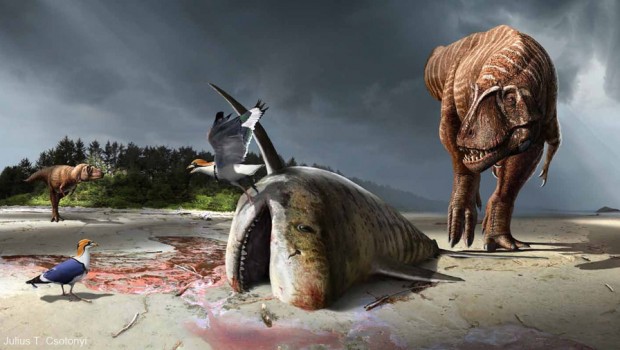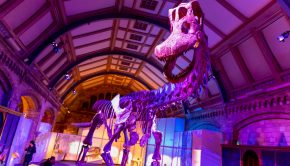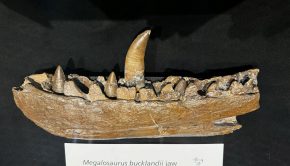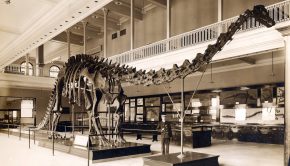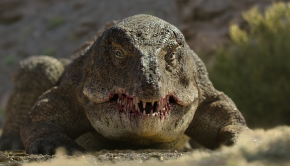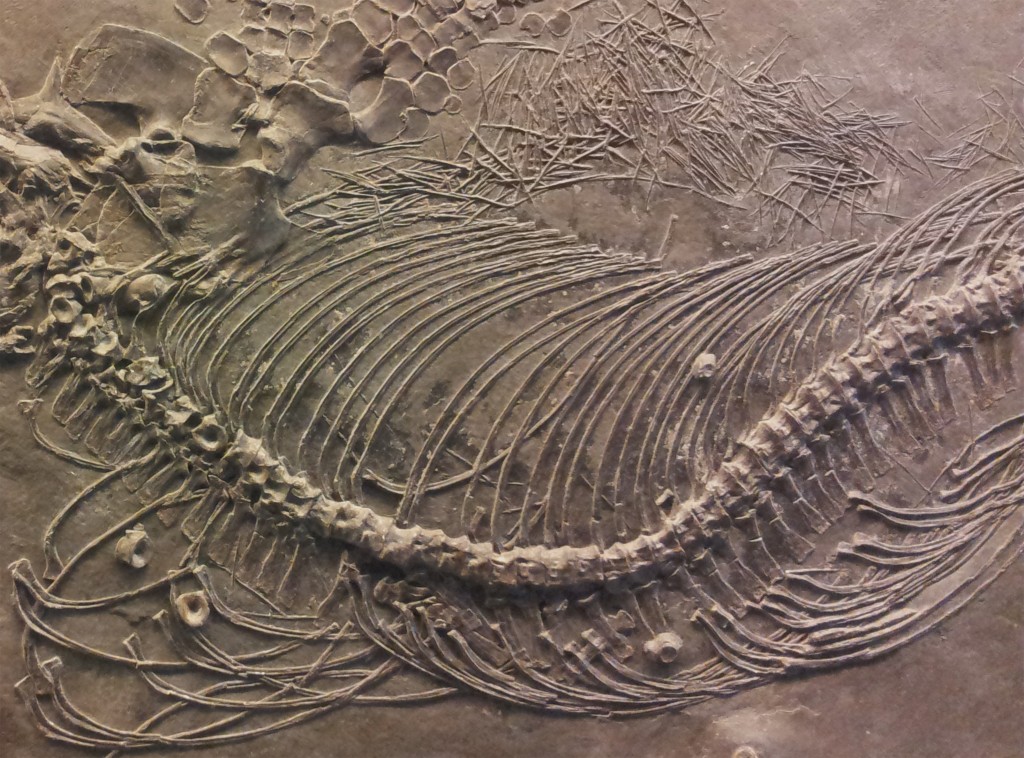Episode 30: Palaeoart
The celebrate the launch of ‘The Paleoart of Julius Csotonyi’ from Titan Books we take a look at the field of palaeoart. In this episode, we’re joined by Julius himself and ask how his images are produced, why they’re produced and to discuss the value of palaeoart. We also run our first competition, details of which can be found at the foot of this page.
Julius won the Lazendorf PaleoArt prize for his dinosaur artwork in 2010 and 2012. An artist and scientist, he has produced work for numerous publications, including National geographic, and museum exhibits. Csotonyi also has a BSc in Ecology and Environmental Biology, and MSc in Ecology, and a PhD in Microbiology.
Podcast: Download (Duration: 50:32 — 69.4MB)
All images courtesry and copyright of Julius Csotonyi and Titan Books.
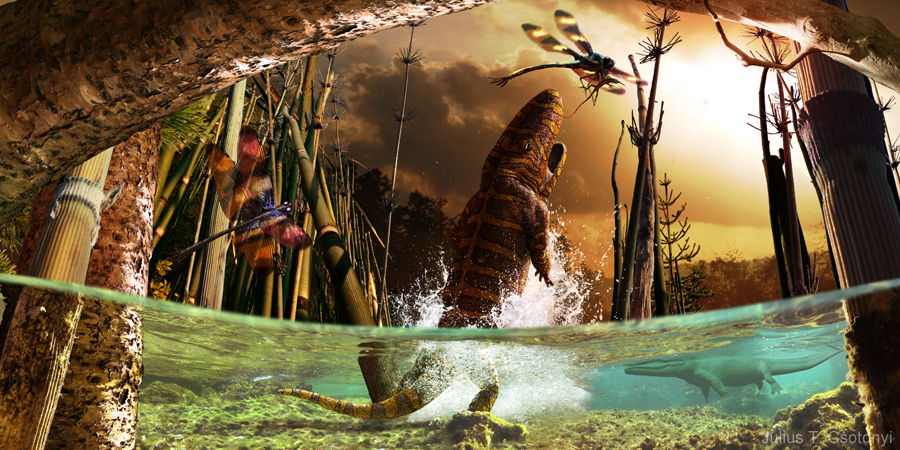
Early Permian landscape. One of a series of murals created for Gondwana Studios’ travelling exhibit, “Permian Monsters: Life Before the Dinosaurs”, this image depicts the bizarre interval in Earth’s history when insects such as Meganeuropsis outgrew reptiles such as Hylonomus, and where swamps teemed with crocodile-like amphibians such as Eryops.
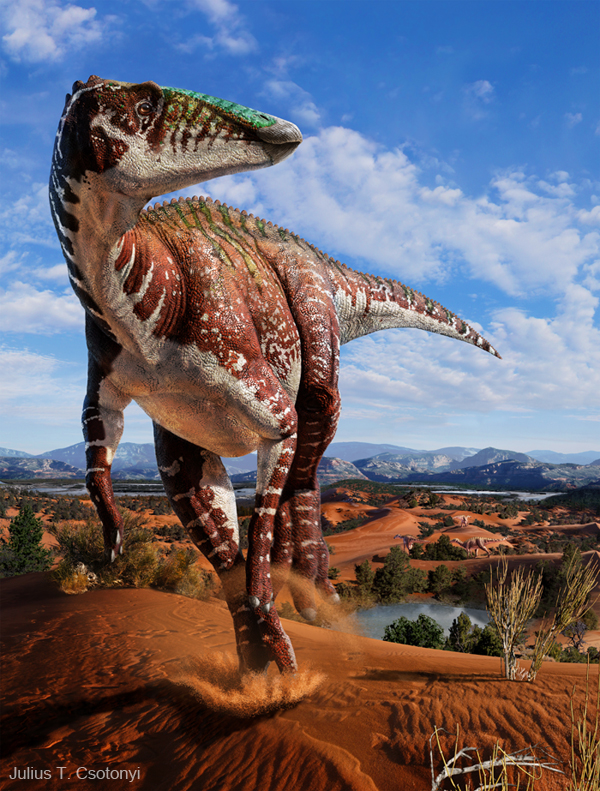
Djadochta Hadrosaur. A member of the duckbilled or hadrosaur dinosaurs from the semi-arid Cretaceous environments preserved in the Djadochta formation in Mongolia and China exploring the drier regions of its habitat, including sand dunes.
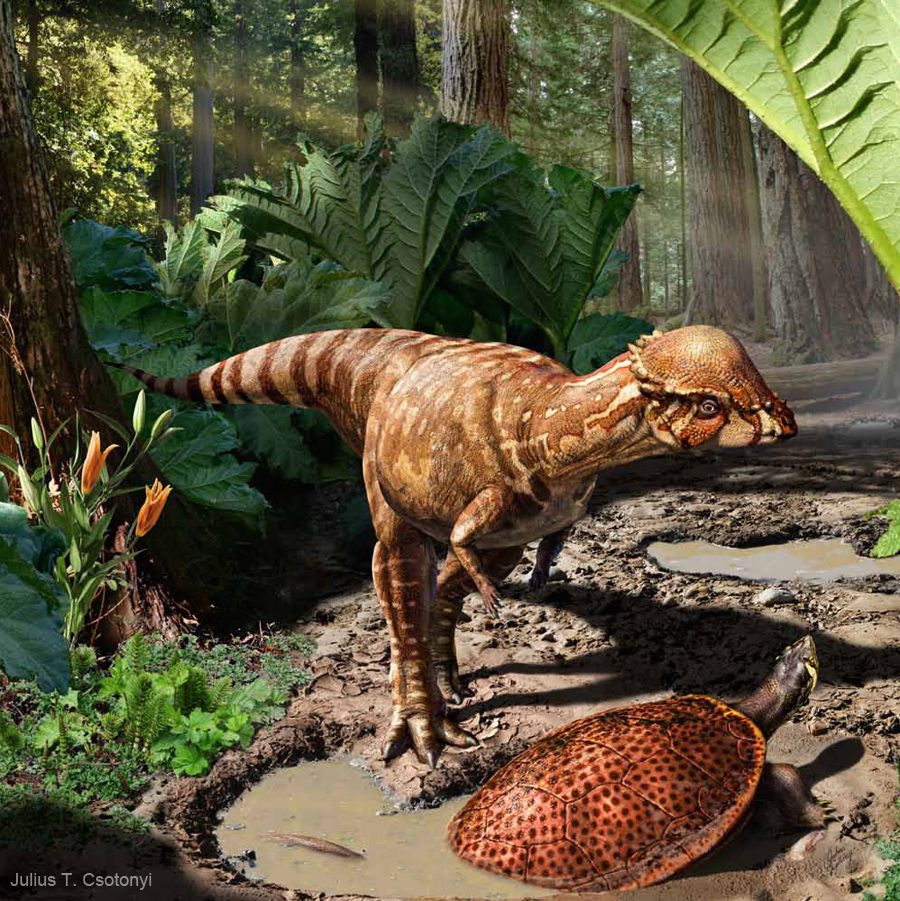
Acrotholus audeti and Neurankylus lithographicus. This scene shows the dome-headed dinosaur, Acrotholus, exiting a stand of giant Gunnera leaves and coming across a Neurankylus turtle soaking in a footprint of a hadrosaur that had passed by earlier.
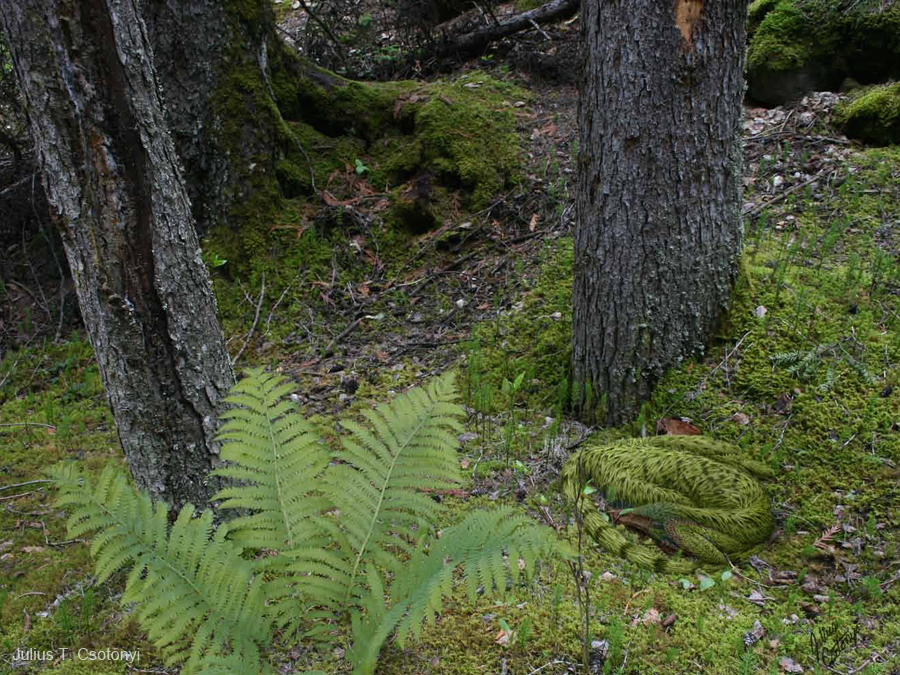
Mei long, first published specimen. An illustration of the first published specimen of the troodontid Mei long, a name which in Chinese means “sleeping dragon”. It comes from the Yixian formation in China, amazingly in a posture similar to that adopted by sleeping birds of today. In this reconstruction, I wished to illustrate the concept of cryptic coloration, referring to the color patterns of an animal closely matching those of its surrounding, and which is employed by modern animals to hide from predators or prey.
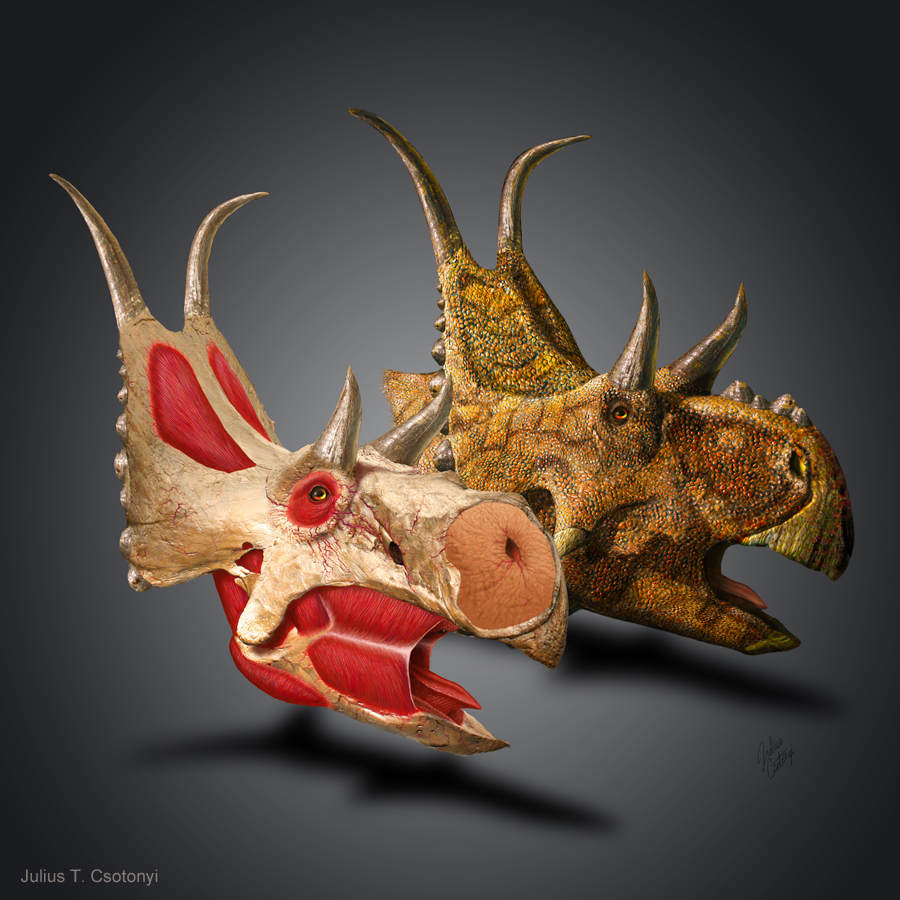
Diabloceratops head restoration sequence. A set of images created to demonstrate the process of making a fleshed-out life restoration from fossilized remains by attaching muscles using paleontological research as reference for adding soft tissues.
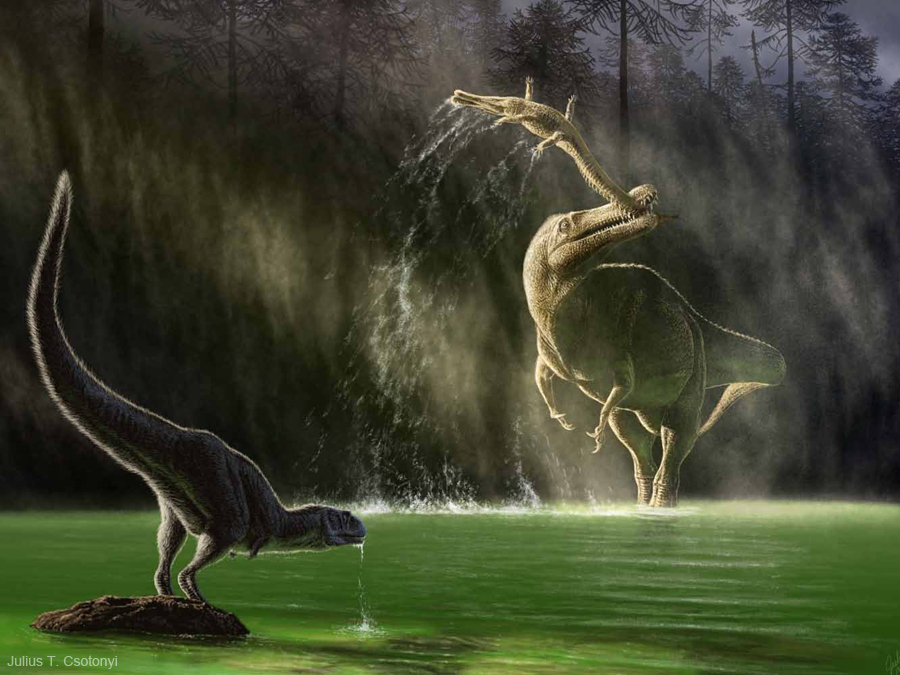
Suchomimus and young Sarcosuchus. In a reversal of the more commonly portrayed attack, the spinosaurid Suchomimus snags a young Sarcosuchus by the tail in Cretaceous Niger as a young Kryptops drinks. The image aims to underscore the fact that archosaurs can fill radically different niches as they mature.
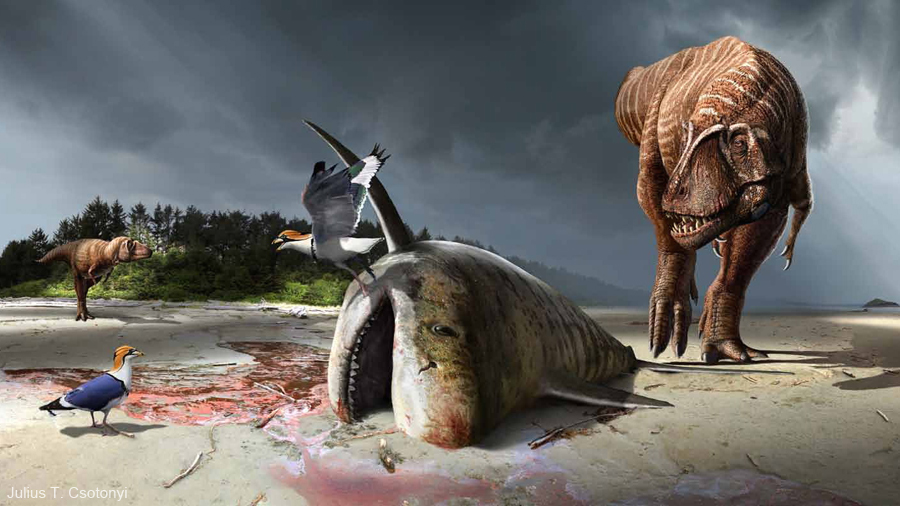
Lythronax investigating Squalicorax. On a beach in Laramidia during the Cretaceous, in what is now Utah, a pair of Lythronax argestes moves in to investigate the stranded carcass of a large Squalicorax shark, which is already being picked at by a pair of enantiornithine birds. Although protofeathers are not known from Lythronax, phylogenetic bracketing suggests their presence in tyrannosaurids in general, so I chose to give Lythronax a stubble of downy feathers.
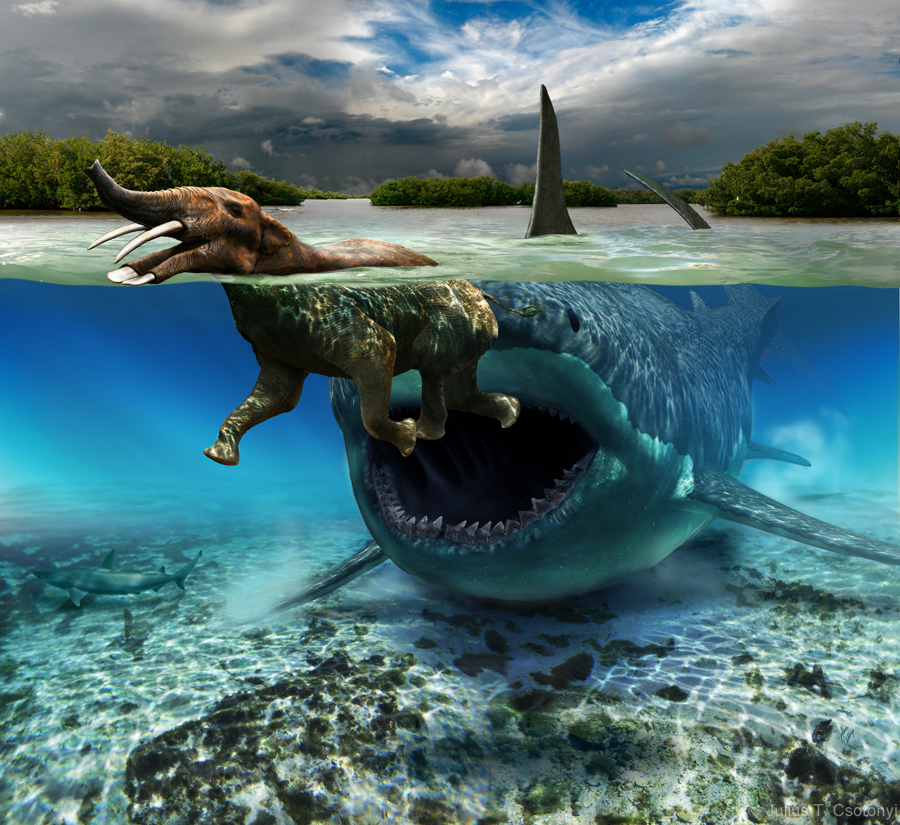
Carcharocles megalodon snacking on Platybelodon in Miocene waters. This image depicts a rare but plausible encounter between the giant shark C. megalodon (jaw diameter estimated at 11 feet) and a medium-sized proboscidean, Platybelodon. Whereas adult sharks likely dined over deep water, relegating their young to the safety of nurseries in shallow lagoons, it is plausible that an adult could enter shallow water occasionally, especially under stress.
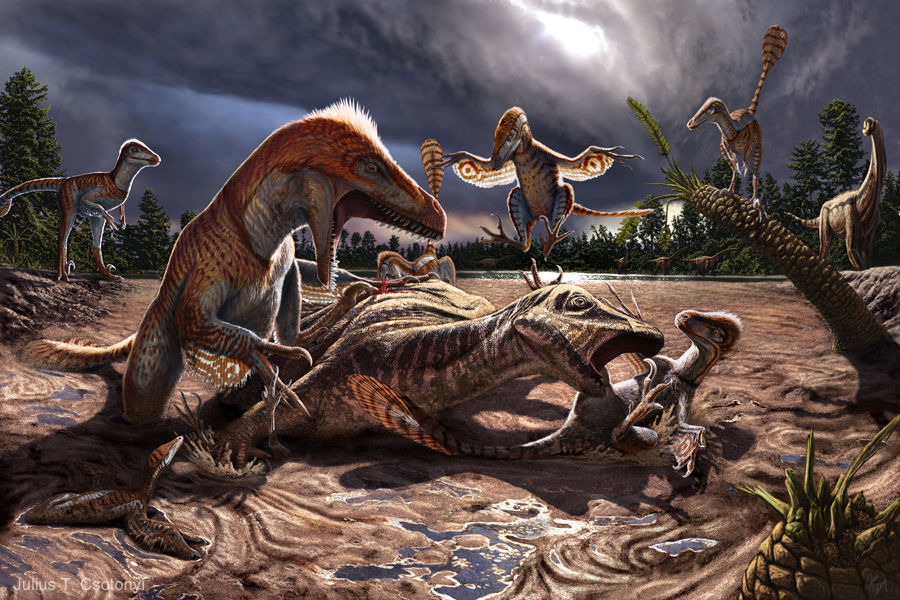
Utahraptor attacking Hippodraco in sand dewatering feature. Inspired by research spearheaded by Dr. James Kirkland, this image reenacts a moment in the last few hours of life of a pack of Utahraptor and the Hippodraco that lured them to their miry fate in a patch of Early Cretaceous Utah quicksand.
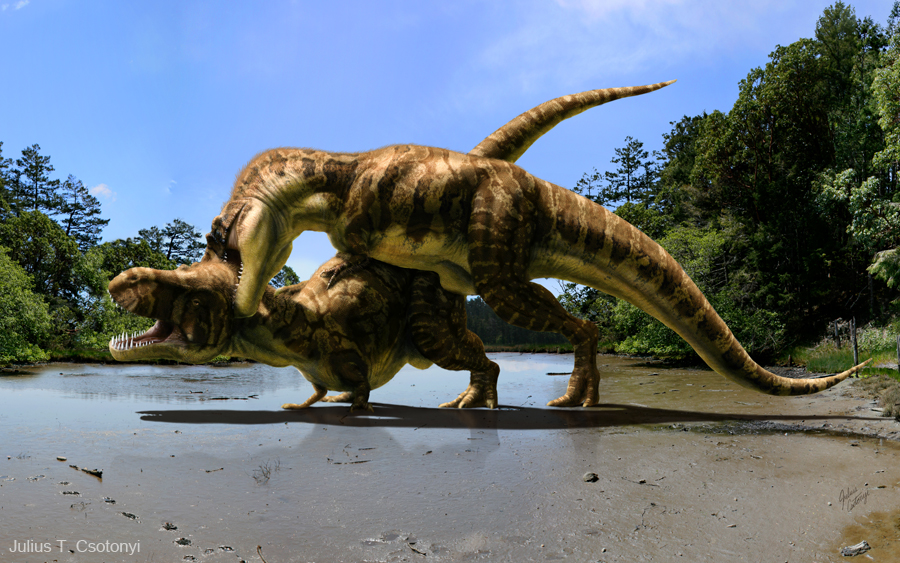
T. rex sex. Released during Valentine’s Day 2013, this is a speculative reconstruction of Tyrannosaurus sexual activity. I have chosen to portray the small but muscular forelimbs serving a clasping role. The love bite is inspired by the behaviour of the males of some modern birds, which could serve to stabilize such a massive coupling.
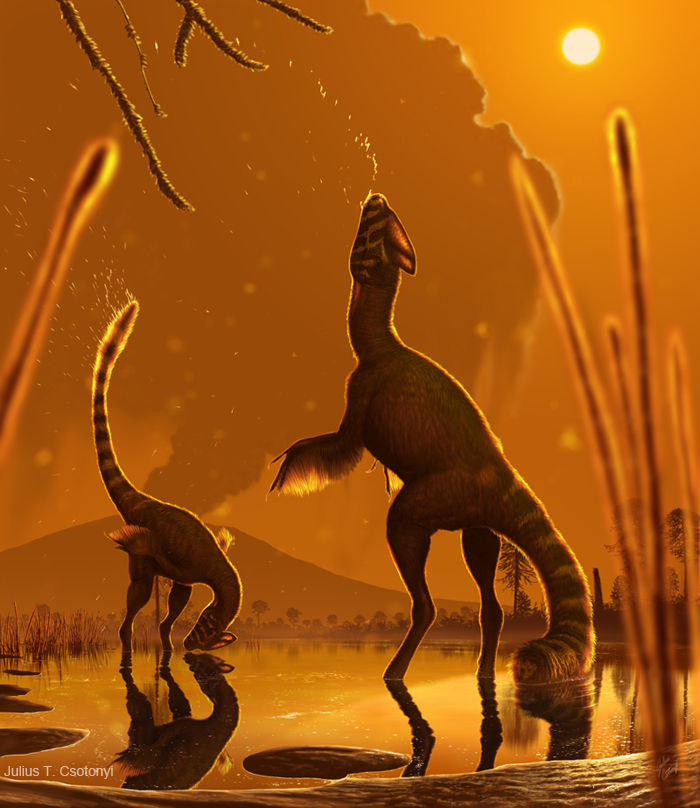
Guanlong courting. Digital painting. For this publication. 2013. A pair of courting early tyrannosauroids (Guanlong, restored with a covering of filamentous feathers, reminiscent of some of those of Dilong) on the shores of a lake in Jurassic China.
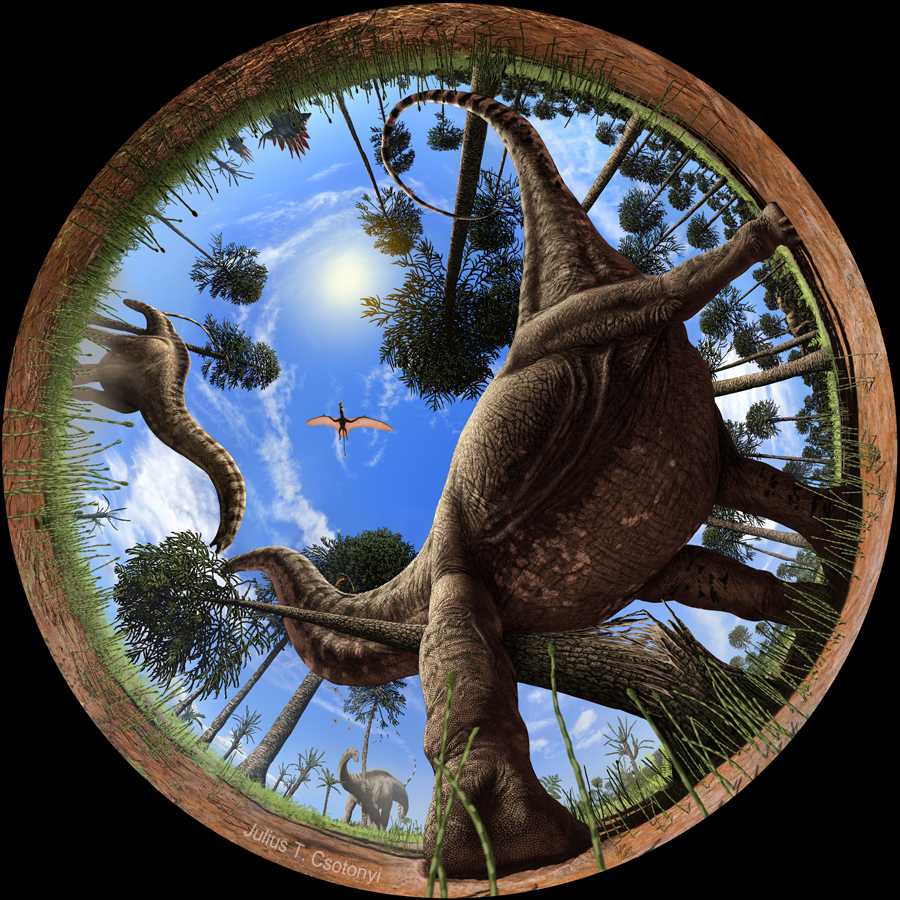
Apatosaurus tree tipping. The sauropod Apatosaurus pushing down trees with their massive torsos, like elephants do today. Around the horizon, other Morrison Formation taxa are visible, including Stegosaurus, Ceratosaurus and Harpactognathus.

